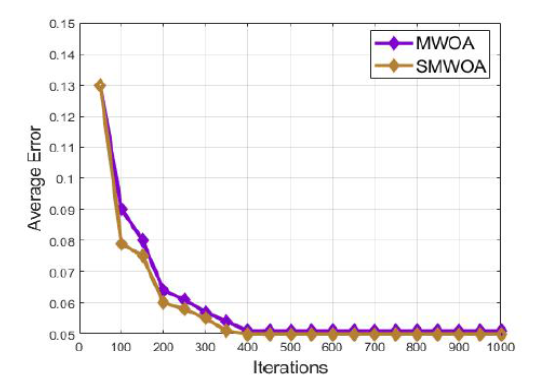


Indian Journal of Science and Technology
Year: 2020, Volume: 13, Issue: 42, Pages: 4396-4406
Original Article
M Sathya1*, S Manju Priya2
1Research Scholar, Dept. of CS, Karpagam Academy of Higher Education, Coimbatore, 641021, India
2Professor, Dept. of CS, Karpagam Academy of Higher Education, Coimbatore, 641 021, India
*Corresponding Author
Email: [email protected]
Received Date:19 September 2020, Accepted Date:28 November 2020, Published Date:04 December 2020
Objectives: To enhance the microarray data classification accuracy, to accelerate the convergence speed of classifier, and Modified Whale Optimization Algorithm (MWOA), refine the best balance among local exploitation and global exploration, a Search space enhanced Modified Whale Optimization Algorithm (SMWOA) is the proposed task. Methods: The SMWOA selects the optimal features stands on the Levy flight method and quadratic interpolation method. Levy flight which employs for acceleration convergence speed of SMWOA andalso holds the result from local optima builds up by the population assortment.A quadratic interpolation takes up the exploitation stage for deeper searching within the search area. Finding: In addition to this, a self-adaptive control parameter is introduced to make a clear variation to the solution quality. Itrefines the best equity among the local exploitation method by global exploration method. After selection of features, those are processed in Naïve Bayes (NB), Support Vector Machine (SVM), K-Nearest Neighbor (KNN), and Artificial Neural Network (ANN) classifiers for cancer detection. Novelty: The classification accuracy is improved by processing the most discriminative features in the classifiers. The overall accuracy, specificity, sensitivity, F1-score and average error of SMWOA-ANN are 6.7%, 5.6%, 7.3% and 5.6% greater than MWOA-ANN respectively for cancer detection.
Keywords: Gene expression data; dimensionality reduction; feature selection; modified whale optimization algorithm (MWOA); search space enhanced modified whale optimization algorithm (WOA)
© 2020 Sathya & Manju Priya.This is an open access article distributed under the terms of the Creative Commons Attribution License, which permits unrestricted use, distribution, and reproduction in any medium, provided the original author and source are credited. Published By Indian Society for Education and Environment (iSee)
Subscribe now for latest articles and news.